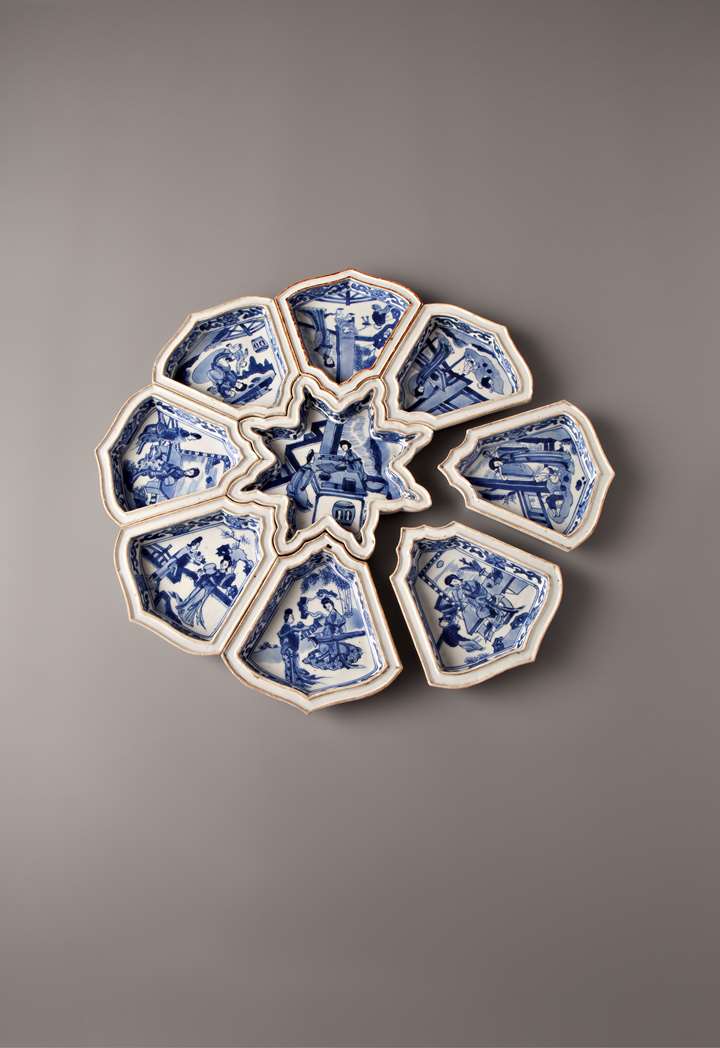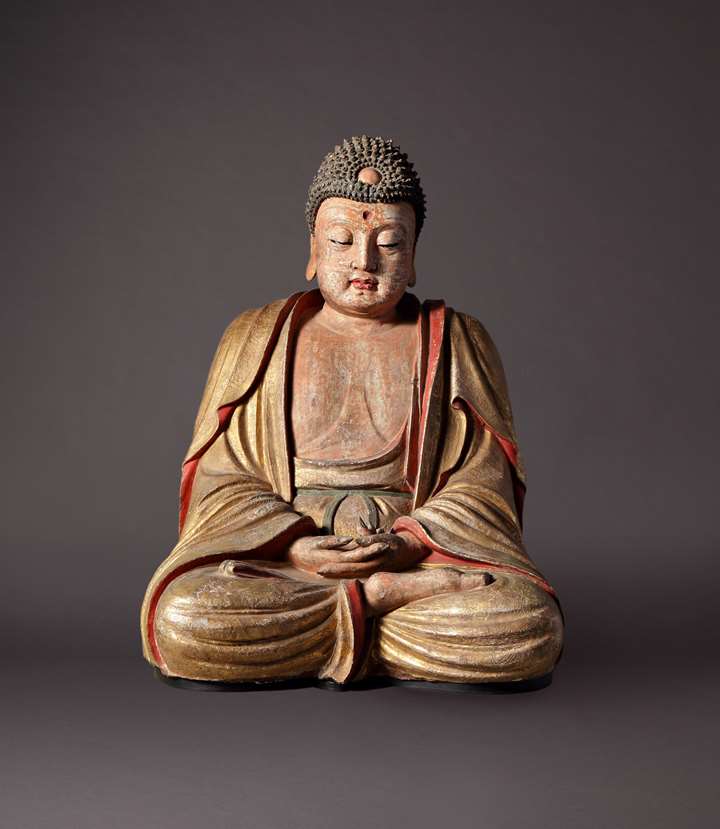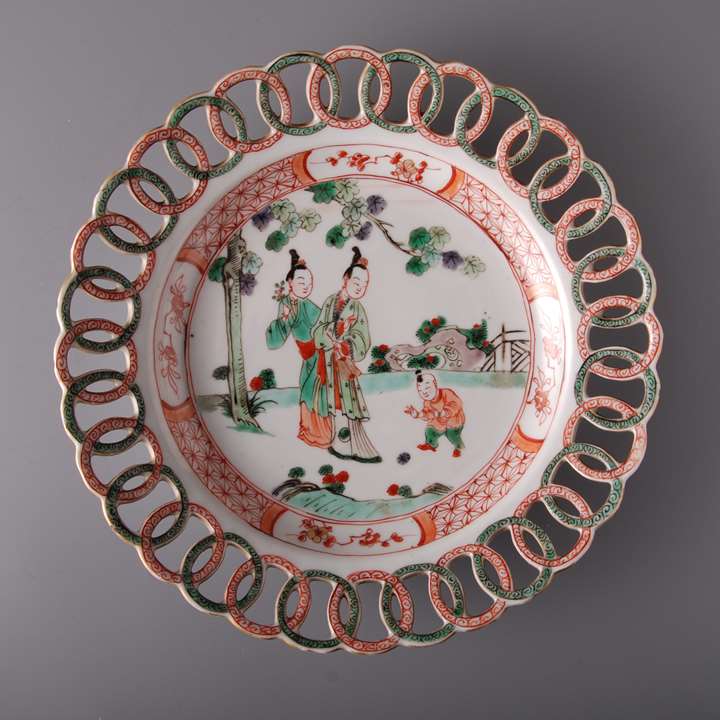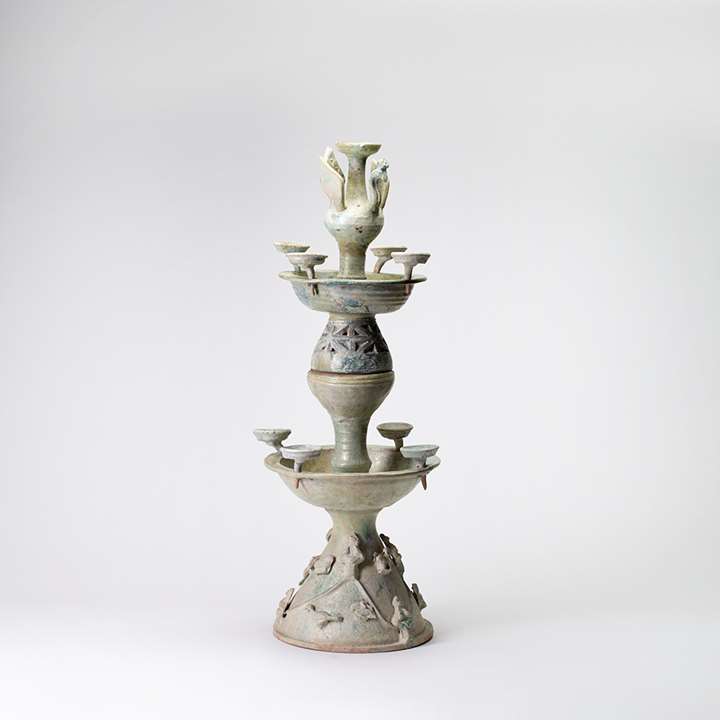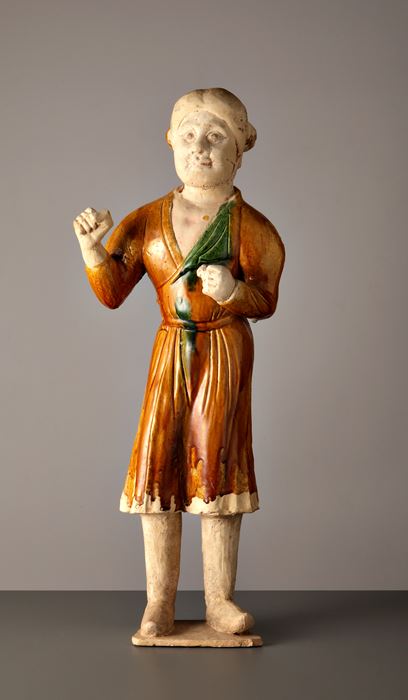Description & Technical information
The figure embodies one of the many non-Han Chinese of the Tang period (possibly a minority of Altaic Turks) who lived and travelled in China during this period. He is standing with his hands raised, as if holding the reins to lead a camel or a horse. He wears a belted outer jacket of Persian origin, glazed in amber colour, bearing narrow sleeves and green-glazed left lapel.
To create these colourful effects, tri-colour sancai, glazes, were applied to the fired earthenware body of the figure before the entire piece was fired a second time. During this subsequent firing the glazes melted and created a smooth, glass-like surface on the finished piece. The limited occurrence of the sancai glazed figures - including animals, humans, and vessels - in burials belonging to imperial family members and the elite, suggest that these items enjoyed great prestige at that time.
Foreign servants feature prominently in Tang burials, especially in the guise of grooms or camel trainers. They often took residency in China and worked as government emissaries, jewellery makers or shop owners. Due to the great presence of foreigners in China, the government allowed for some offices to be opened specifically to assist foreign visitors with translation and other needs.
Foreign grooms can be found in the Morse Collection (New York) and the Meiyintang Collection.
Date: Late 7th-early 8th
Period: Middle Ages, 7th century, 8th century
Origin: China
Medium: Earthenware
Signature: Tl-Tested, Oxford UK
Dimensions: 59.5 cm (23³/₈ inches)
Categories: Oriental and Asian Art
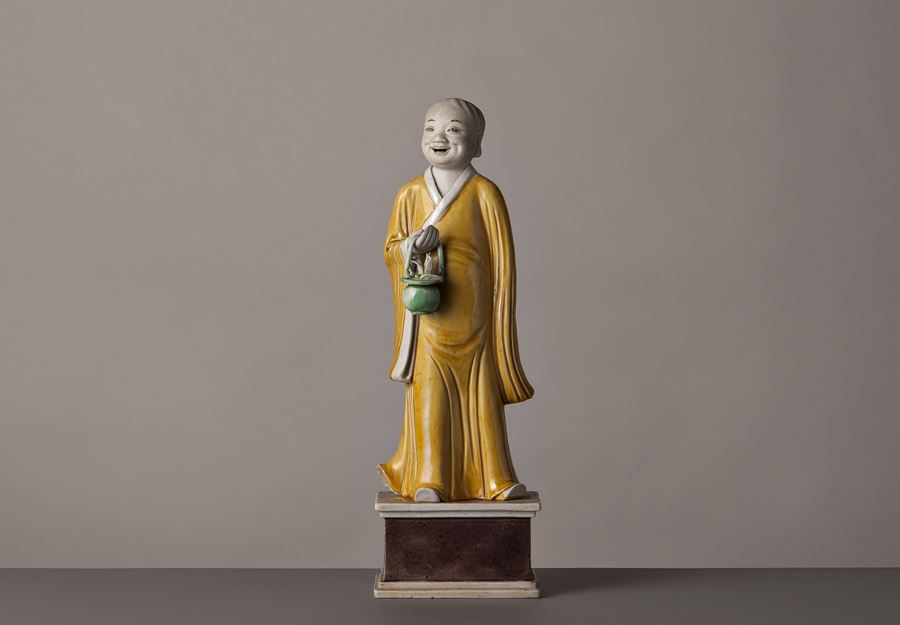
Discover the gallery
Vanderven Oriental Art
Chinese Ceramics and Works of Art
